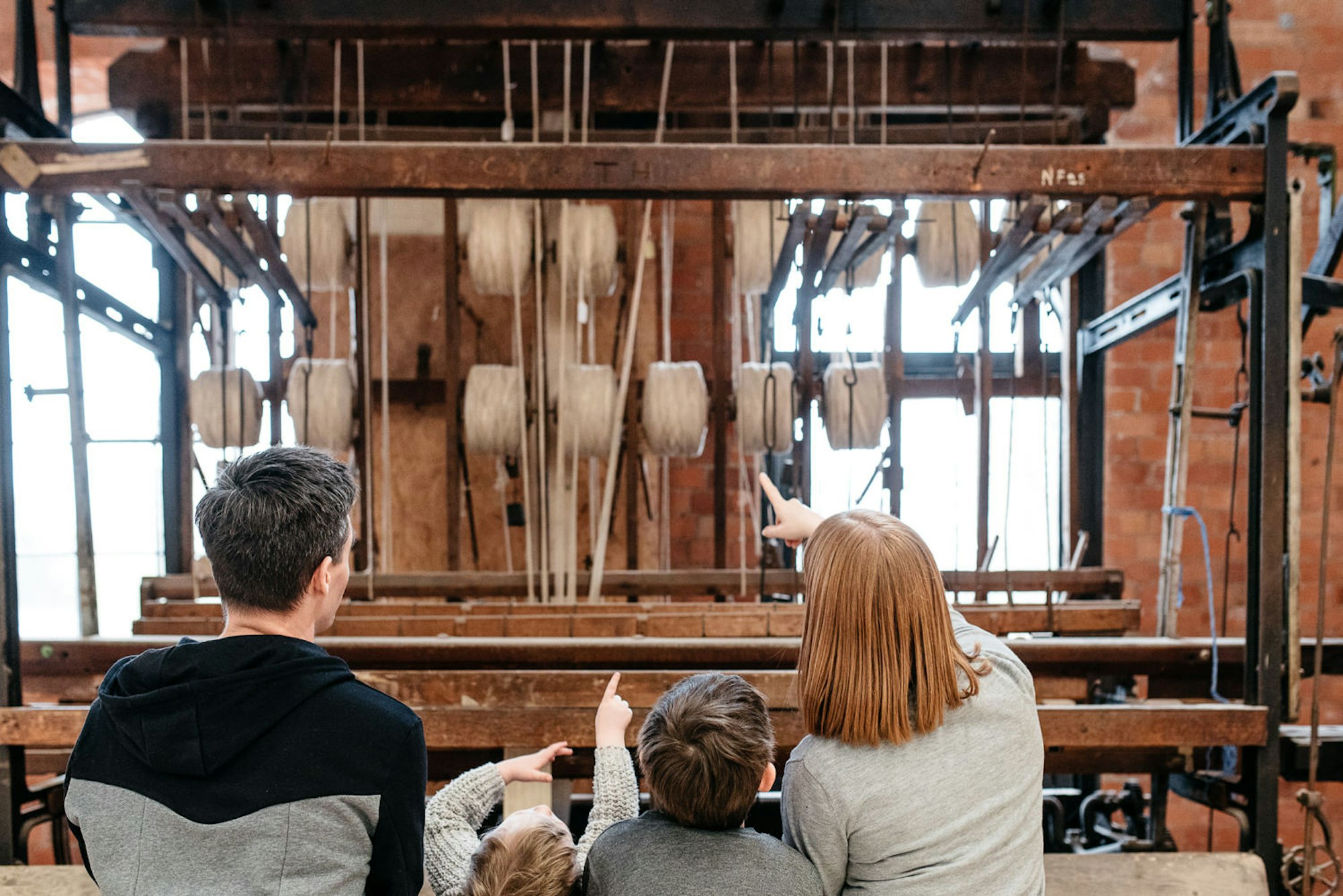Is 'Made in Scotland' ever gonna trump 'Made in China?'

It sometimes seems impossible to stay hopeful about the future. One of those sustainable futures, where the things that we use everyday aren't screwing over a factory worker, pouring waste into an ocean or tearing down a rainforest somewhere else around the world.

Even if cost and public perception weren’t an issue (which they most certainly are) making local manufacturing accessible in Scotland faces many barriers. Our infrastructure and our expertise, in some areas, like materials research, are world-leading, but in others are decades behind. Even in the last couple of weeks, the majority of our political leaders have been too busy point-scoring over jobs at Clyde shipbuilders and TATA steelworks to be thinking about the long term future of the manufacturing industry. Are any of them considering the types of factories, workers and manufacturing services that we will need in the future?
Image from The Guardian
We visit fantastic, skilled and thriving manufacturers in Scotland every week. Though we hope that people living here will start to utilise them, realistically the majority of what's made in Scotland is destined for export. Our lace goes to Russia, our scarves to Japan, our whisky to the boardrooms of the US. Is Scotland’s manufacturing industry destined to stick to this export model or could there be an alternative way forward?
Designer, and operations manager at Make Works, Lottie Burnley, discusses the ins and outs of what is happening in the manufacturing landscape, and what we’re really trying to change about Scottish manufacturing in the long term.
Manufacturing in Asia
As of 2013, 46.5% of the world’s global manufacturing output came from Asia. Why has Asia become the centre of global manufacturing? Is it all economically driven? Back in the 1960’s it was to do with cheap labour, and there’s no doubt that factory wages in Asia are still much lower than the UK.
Image courtesy of China Mike
In China, manufacturing wages have been going up by on average 12% each year for the last 15 years. Wages are increasing year on year, and vary hugely from province to province, but The Economist reported last year that the average factory worker in China was earning $27.50 per day – that’s £19.21. I was surprised when I first read that figure, but as I learned more, I found that despite wage increases there are still a lot of economic savings to be had by manufacturing in China.
For example, Chinese factory workers work very long hours, have very few breaks and have no sick leave. When you’re manufacturing large production runs this means much higher productivity levels than we can humanely (and legally) achieve in the UK or Europe. This also means getting products to market quicker which is pretty important if you’re trying to ship a new smartphone. If wages are starting to get too high in some parts of Asia, these manufacturers are outsourcing to poorer parts of the region like Vietnam where daily wages are just $6.70. In comparison, the average factory worker in the UK earns £55.50 per day.
Image from Bloomberg
Being at the helm of global manufacturing for decades also means that Chinese manufacturing companies have the knowledge and infrastructure required for the global manufacturing chain that we, in the UK, lost decades ago. Huge companies like IBM and Apple have invested in this infrastructure, building railway lines overland to Europe to shorten lead times and supporting the development of entire cities around new manufacturing bases.
Even new companies, like Dragon Innovation are invested in making manufacturing in Asia easier to do. This means that both huge corporations and Kickstarter-funded startups continue to put convenience and cost ahead of the environmental and social impact of how their products are manufactured. Lessons picked up in documentaries like the The True Cost, or Manufactured Landscapes end up being separated, justified, and ultimately removed to push a business forward and ship products.

If you'd like to find our more about what manufacturing in China looks like read our article: Christmas, handmade in China
What's the manufacturing industry actually like in Scotland?
In 2016, it was reported that overall, the manufacturing economy in the UK has been shrinking since the recession. However, these figures are a stark contrast to the manufacturing landscape that we see and engage with on a daily basis. From the rise of individual makers setting up shop, a massive demand from designers and small businesses to understand the provenance of their product, to the hundreds of small scale fabrication businesses opening up in the last five years as a result. From art fabricators like Old School Fabrications, to digital fabric printers BeFab Be Creative, or CNC machinists and laser cutters, Flux Laser Studio; the idea of small scale, publically accessible manufacturers making everyday objects is becoming more and more realistic.

We also see larger, specialist manufacturers continuing to thrive. For example, Ravensby Glass, float glass manufacturers in Dundee with 165 employees who have been growing sustainably since 1985, primarily supplying clients within the UK. In Clydebank, places like European Circuits are manufacturing circuit boards. Their clients include interaction designers, hardware startups, and internet of things products competing directly with hardware components from China. Though these companies won’t be competing on price, they will be with their short lead times, their ability to manufacture small quantities, bespoke parts and of course, high production quality. These findings are echoed in reports showing that 50% of companies re-shoring their production are doing so to improve on quality alone.
Beyond conventional manufacturers, we’ve also seen companies like UnMade Studio and Opendesk embracing distributed manufacturing – moving ‘locally made’ to the forefront of how consumers buy furniture and knitwear. Though these are still relatively niche services they’re proof that a new way of consuming is possible.
Read more about distributed manufacturing

In the last five years we’ve also seen open access workshops and makerspaces taking shape in cities across Scotland, the UK and beyond. Although these haven’t yet become the neighbourhood factories that we dreamed of, they’re doing fantastic work in up-skilling the general public when it comes to making and materials.
Is the textiles industry paving the way for a wave of re-shoring manufacturing in Scotland?
One of the real success stories of the decade has been the recent boom in the textiles industry both in Scotland and across the UK. Have high street brands like Primark and H&M started manufacturing in Scotland? I'm afraid not, what we’re seeing is high end and luxury brands like Burberry and Chanel bringing manufacturing here, or at least some of it. It’s a start, so this is a good thing right? Looking at knitwear for example, manufacturers like ESK Valley Knitwear, Eribe Knitwear and Begg & Co are producing some of the highest end knitwear pieces for European fashion houses. This means more jobs contributing to our economy and more investment into the textiles industry.

But looking back to the bigger picture, to our hopeful dreams of a local, distributed manufacturing system, is this actually helping us move in the right direction? In some ways, no. This demand for manufacturing in Scotland, or “re-shoring” is not coming from the conscience of the brand, but the savviness of the crucial Asian consumers who are not willing to pay high prices for Chinese-made goods. In other words, products that are ‘Made in Scotland’, will continue to be bound for export, which, in the long term, I’d argue, isn’t in our sustainable interest. However, alongside these international fashion houses you’ll also find local designers and makers who are producing short runs to be sold within the UK. Currently, the demand from these local designers wouldn’t be enough to keep the mills in business, so at the moment they exist in a delicate balance.
What shall I do as a consumer?
Many smaller manufacturing companies are trying to break away from this global supply system but it’s not always possible and sometimes they have to accept compromises. We think that any move towards local production means putting money back into the local economy and distancing ourselves from the exploitation of the environment and its many workers. Whilst designers, brands and manufacturers alike must take on board their responsibility in re-designing and changing the existing manufacturing landscape for the better, there's also a huge role to be played by the rest of us. If, like us, you want to see a future of local, small scale manufacturing, then the secret is becoming a conscious consumer and being prepared to give up on the convenience of the high street.
Is there hope for us to genuinely embrace 'Made in Scotland' when it's up against such an entrenched, economically incentivised system of global supply and production... Or is it time to hang up the toolbelt? There's certainly a long way to go, but with the financial benefits of manufacturing overseas gradually dwindling, alongwith small scale, local manufacturers on the rise in Scotland, and a real desire amongst creatives and the general public alike to support these growing companies we’re very grateful to have a front row seat.
If this article has made you want to buy more locally manufactured things read about my experience of having a custom shirt handmade in Scotland by Emily Millichip
Categories
Article
Related stories
Why Make Work Locally
Alan Moore and Ten30 Fashion
Tips for Manufacturing in Scotland
A Life in Lace
In the Belly of the Beast: my one year manufacturing for Coca Cola








